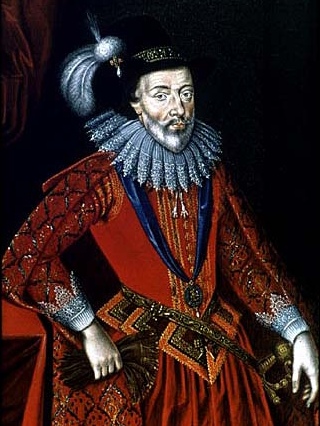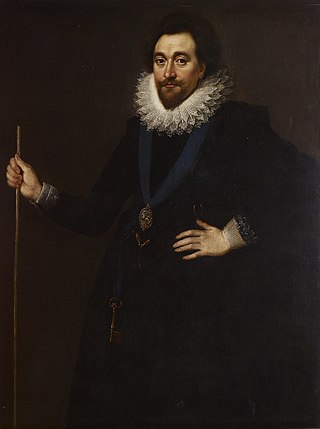
The Oxfordian theory of Shakespeare authorship contends that Edward de Vere, 17th Earl of Oxford, wrote the plays and poems of William Shakespeare. While historians and literary scholars overwhelmingly reject alternative authorship candidates, including Oxford, public interest in the Oxfordian theory continues. After the 1920s, the Oxfordian theory became the most popular alternative Shakespeare authorship theory.

William Shakespeare (1564–1616) wrote sonnets on a variety of themes. When discussing or referring to Shakespeare's sonnets, it is almost always a reference to the 154 sonnets that were first published all together in a quarto in 1609. However, there are six additional sonnets that Shakespeare wrote and included in the plays Romeo and Juliet, Henry V and Love's Labour's Lost. There is also a partial sonnet found in the play Edward III.

Henry Wriothesley, Lord of Southampton, was the only son of Henry Wriothesley, 2nd Earl of Southampton, and Mary Browne, daughter of Anthony Browne, 1st Viscount Montagu. Shakespeare's two narrative poems, Venus and Adonis and The Rape of Lucrece, were dedicated to Southampton, who is frequently identified as the Fair Youth of Shakespeare's Sonnets.

John Thomas Looney (luni) was an English school teacher who is notable for having originated the Oxfordian theory, which claims that Edward de Vere, 17th Earl of Oxford (1550–1604) was the true author of Shakespeare's plays.

William Stanley, 6th Earl of Derby, KG was an English nobleman and politician. Stanley inherited a prominent social position that was both dangerous and unstable, as his mother was heir to Queen Elizabeth I under the Third Succession Act, a position inherited in 1596 by his deceased brother's oldest daughter, Anne, two years after William had inherited the Earldom from his brother. After a period of European travel in his youth, a long legal battle eventually consolidated his social position. Nevertheless, he was careful to remain circumspect in national politics, devoting himself to administration and cultural projects, including playwriting.

William Herbert, 3rd Earl of Pembroke, of Wilton House in Wiltshire, was an English nobleman, politician and courtier. He served as Chancellor of the University of Oxford and together with King James I founded Pembroke College, Oxford. In 1608 he was appointed Warden of the Forest of Dean, Constable of St Briavels Castle, Gloucestershire, and in 1609 Governor of Portsmouth, all of which offices he retained until his death. He served as Lord Chamberlain from 1615 to 1625. In 1623 the First Folio of Shakespeare's plays was dedicated to him and his brother and successor Philip Herbert, 1st Earl of Montgomery.

William Shakespeare's sexuality has been the subject of frequent debates. It is known from public records that he married Anne Hathaway and had three children with her; scholars have examined their relationship through documents, and particularly through the bequests to her in his will. Some historians have speculated Shakespeare had affairs with other women, based on contemporaries' written anecdotes of such affairs and sometimes on the "Dark Lady" figure in his sonnets. Some scholars have argued he was bisexual, based on analysis of the sonnets; many, including Sonnet 18, are love poems addressed to a man, and contain puns relating to homosexuality. Whereas, other scholars criticized this view stating that these passages are referring to intense platonic friendship, rather than sexual love. Another explanation is that the poems are not autobiographical but fiction, another of Shakespeare's "dramatic characterization[s]", so that the narrator of the sonnets should not be presumed to be Shakespeare himself.

Sonnet 8 is one of 154 sonnets written by the English playwright and poet William Shakespeare. It is a procreation sonnet within the Fair Youth sequence. As with the other procreation sonnets, it urges a young man to settle down with a wife and to have children. It insists a family is the key to living a harmonious, peaceful life.

Sonnet 11 is one of 154 sonnets written by the English playwright and poet William Shakespeare. It is a procreation sonnet within the 126 sonnets of the Fair Youth sequence, a grouping of Shakespeare's sonnets addressed to an unknown young man. While the order in which the sonnets were composed is undetermined, Sonnet 11 was first published in a collection, the Quarto, alongside Shakespeare's other sonnets in 1609.

Sonnet 20 is one of the best-known of 154 sonnets written by the English playwright and poet William Shakespeare. Part of the Fair Youth sequence, the subject of the sonnet is widely interpreted as being male, thereby raising questions about the sexuality of its author. In this sonnet the beloved's beauty is compared to both a man's and a woman's.

Sonnet 23 is one of a sequence of 154 sonnets written by the English playwright and poet William Shakespeare, and is a part of the Fair Youth sequence.

Sonnet 144 was published in the Passionate Pilgrim (1599). Shortly before this, Francis Meres referred to Shakespeare's Sonnets in his handbook of Elizabethan poetry, Palladis Tamia, or Wit's Treasurie, published in 1598, which was frequently talked about in the literary centers of London taverns. Shakespeare's sonnets are mostly addressed to a young man, but the chief subject of Sonnet 127 through Sonnet 152 is the "dark lady". Several sonnets portray a conflicted relationship between the speaker, the "dark lady" and the young man. Sonnet 144 is one of the most prominent sonnets to address this conflict.

The Prince Tudor theory is a variant of the Oxfordian theory of Shakespeare authorship, which asserts that Edward de Vere, 17th Earl of Oxford, was the true author of the works published under the name of William Shakespeare. The Prince Tudor variant holds that Oxford and Queen Elizabeth I were lovers and had a child who was raised as Henry Wriothesley, 3rd Earl of Southampton. The theory followed earlier arguments that Francis Bacon was a son of the queen. A later version of the theory, known as "Prince Tudor II" states that Oxford was himself a son of the queen, and thus the father of his own half-brother.

"The Portrait of Mr. W. H." is a story written by Oscar Wilde, first published in Blackwood's Magazine in 1889. It was later added to the collection Lord Arthur Savile's Crime and Other Stories, though it does not appear in early editions. An enlarged edition planned by Wilde, almost twice as long as the Blackwood's version, with cover illustration by Charles Ricketts, did not proceed and only came to light after Wilde's death. This was published in limited edition by Mitchell Kennerley in New York in 1921, and in a first regular English edition by Methuen in 1958, edited by Vyvyan Holland.
Charles Wisner Barrell was an American writer. He first became significant as an art critic, promoting realism. He later built a career as an early exponent of public relations and as a documentary film maker.

Anne Whateley is the name given to a woman who is sometimes supposed to have been the intended wife of William Shakespeare before he married Anne Hathaway. Most scholars believe that Whateley never existed, and that her name in a document concerning Shakespeare's marriage is merely a clerical error. However, several writers on Shakespeare have taken the view that she was a real rival to Hathaway for Shakespeare's hand. She has also appeared in imaginative literature on Shakespeare and in Shakespeare authorship speculations. Shakespeare's biographer Russell A. Fraser describes her as "a ghost", "haunting the edges of Shakespeare's story". She has also been called "the first of the Shakespearean Dark Ladies".

The Derbyite theory of Shakespeare authorship is the view that William Stanley, 6th Earl of Derby (1561–1642), was the true author of the works of William Shakespeare. Derby is one of several individuals who have been claimed by advocates of the Shakespeare authorship question to be the true author of Shakespeare's works.
Percy Allen (1875–1959) was an English journalist, writer and lecturer most notable for his advocacy of the Oxfordian theory of Shakespeare authorship, and particularly for his creation of Prince Tudor theory, which claimed that the Earl of Oxford fathered a child with Queen Elizabeth I.
Bernard Mordaunt Ward was a British author and third-generation soldier most noted for his support of the Oxfordian theory of Shakespeare authorship and writing the first documentary biography of Edward de Vere, 17th Earl of Oxford.

The Nevillean theory of Shakespeare authorship contends that the English parliamentarian and diplomat Henry Neville (1564–1615) wrote the plays and poems traditionally attributed to William Shakespeare.



















